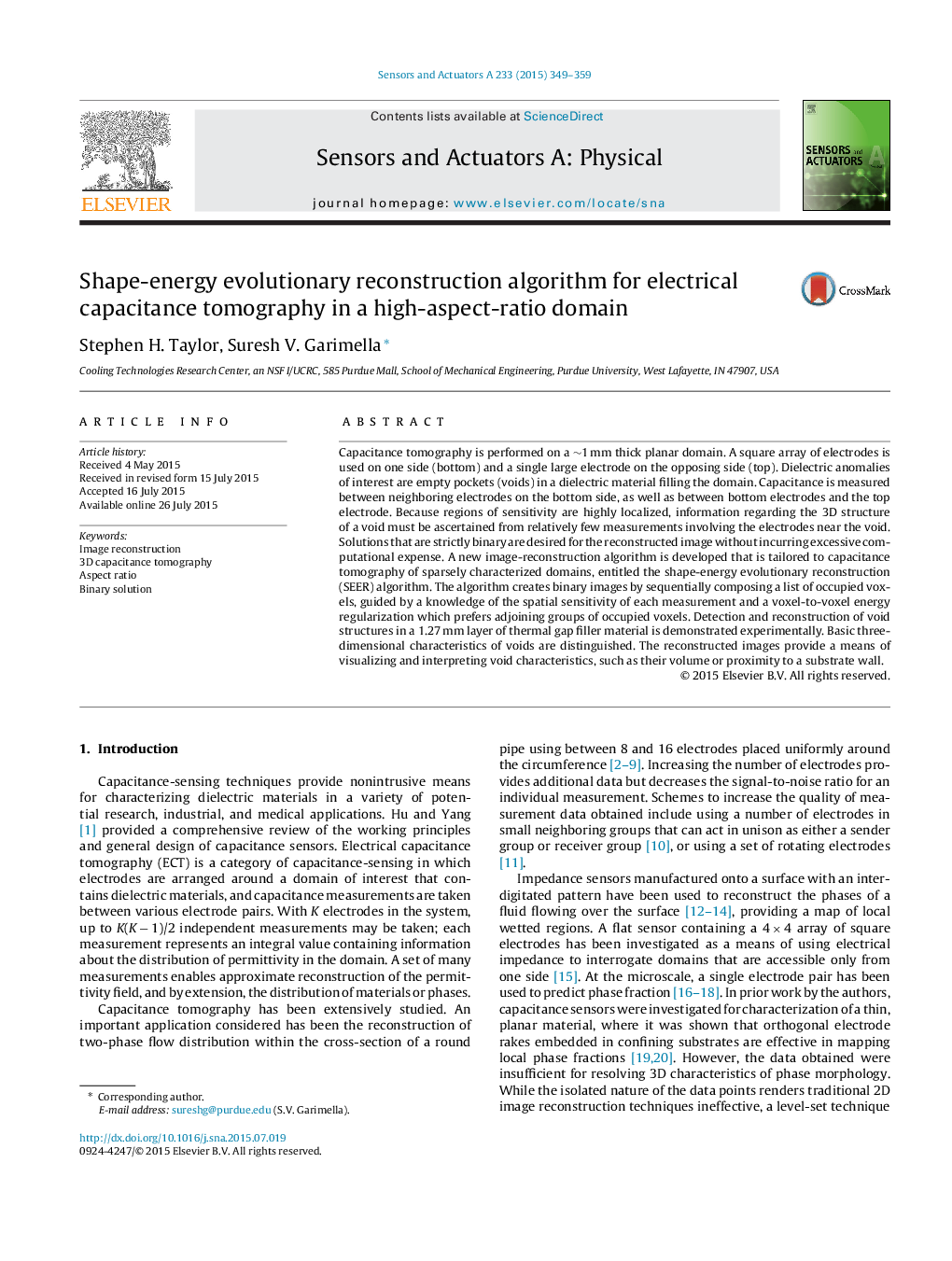| کد مقاله | کد نشریه | سال انتشار | مقاله انگلیسی | نسخه تمام متن |
|---|---|---|---|---|
| 7135640 | 1461867 | 2015 | 11 صفحه PDF | دانلود رایگان |
عنوان انگلیسی مقاله ISI
Shape-energy evolutionary reconstruction algorithm for electrical capacitance tomography in a high-aspect-ratio domain
ترجمه فارسی عنوان
الگوریتم بازبینی تکاملی شکل-انرژی برای توموگرافی خازنی الکتریکی در یک دامنه نسبتا بالا
دانلود مقاله + سفارش ترجمه
دانلود مقاله ISI انگلیسی
رایگان برای ایرانیان
کلمات کلیدی
موضوعات مرتبط
مهندسی و علوم پایه
شیمی
الکتروشیمی
چکیده انگلیسی
Capacitance tomography is performed on a â¼1Â mm thick planar domain. A square array of electrodes is used on one side (bottom) and a single large electrode on the opposing side (top). Dielectric anomalies of interest are empty pockets (voids) in a dielectric material filling the domain. Capacitance is measured between neighboring electrodes on the bottom side, as well as between bottom electrodes and the top electrode. Because regions of sensitivity are highly localized, information regarding the 3D structure of a void must be ascertained from relatively few measurements involving the electrodes near the void. Solutions that are strictly binary are desired for the reconstructed image without incurring excessive computational expense. A new image-reconstruction algorithm is developed that is tailored to capacitance tomography of sparsely characterized domains, entitled the shape-energy evolutionary reconstruction (SEER) algorithm. The algorithm creates binary images by sequentially composing a list of occupied voxels, guided by a knowledge of the spatial sensitivity of each measurement and a voxel-to-voxel energy regularization which prefers adjoining groups of occupied voxels. Detection and reconstruction of void structures in a 1.27Â mm layer of thermal gap filler material is demonstrated experimentally. Basic three-dimensional characteristics of voids are distinguished. The reconstructed images provide a means of visualizing and interpreting void characteristics, such as their volume or proximity to a substrate wall.
ناشر
Database: Elsevier - ScienceDirect (ساینس دایرکت)
Journal: Sensors and Actuators A: Physical - Volume 233, 1 September 2015, Pages 349-359
Journal: Sensors and Actuators A: Physical - Volume 233, 1 September 2015, Pages 349-359
نویسندگان
Stephen H. Taylor, Suresh V. Garimella,
